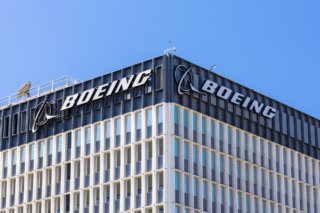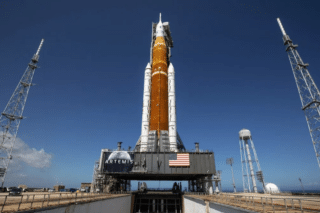Everyday life is full of objects that originated in space: The composite structures on commercial aircraft flying today, UV-blocking sunglasses and shock-absorbing footwear were all first created for the space shuttle. Smartphone technology also comes from space—it was work done at NASA’s Jet Propulsion Laboratory that led to digital cameras small enough to fit in phones without draining their batteries. However, global industry’s increased reliance on communications, precision robotics, resource extraction and computing is being fueled by work now taking place in the space industry on satellites, comet missions, asteroid mining and even some cutting-edge work on artificial intelligence.
Space Tech Invades Earth-Based Facilities
For Matthew Bey, a space analyst at global intelligence and advisory firm Stratfor in Austin, Texas, it’s arguable that in the coming years innovations developed for space exploration will touch every single Earth-based industry:
The space industry remains important as the cutting-edge area for more foundational science, engineering and technology.
Europe is currently assembling Galileo satellites, a global navigation satellite system that promises real-time positioning accuracy down to the meter, by 2020, while private companies including OneWeb and SpaceX plan to launch thousands of satellites into low-Earth orbit to provide global broadband Internet access. Matthew Bey says:
The space industry is vitally important for Earth-based industry because of the growing reliance on the space industry for communications, aerospace, GPS-linked systems and other applications that satellites facilitate.
Oil & Gas and Space Robots
In designing several generations of rovers to explore Mars, the space industry developed technology that can cope with extreme conditions, including heat and radiation. Heavy industries, in particular oil and gas, have benefited.
Building on the European Space Agency’s ExoMars rover—due to land on the red planet in 2018—is GMV’s autonomous Foxiris robot. It’s currently being used on Total’s oil and gas production rigs to locate gas leaks and detect dangerous surface temperatures. Kris Kydd, Total’s Argos project manager from the company’s exploration and production R&D department:
We want the robot to be able to move anywhere on a production facility that a human can’t go today.
Another is the iRobot PackBot Tactical Mobile Robot, about 300 of which have removed unexploded bombs and mines in Iraq and Afghanistan. Put together by former employees of NASA and the Defense Advanced Research Projects Agency (DARPA), PackBot—inspired by a Martian rover named Rocky-7, itself a test-bed for NASA’s Mars rovers Spirit and Opportunity—worked in the tsunami-damaged Fukushima nuclear power plant in Japan.
A Fire Detection System That Comes From a Comet
Technology for studying the tail of a comet can also find concrete applications on the ground. Work by the German space agency DLR, as part of the European Space Agency’s current Rosetta mission to put the Philae lander on the surface of Comet 67P, has already led to the creation of a patented fire detection system called FireWatch. High-resolution optical sensors designed to analyze the tail of Comet 67P are now being used in all endangered German forests to detect smoke during day or nighttime, and in any weather, alerting firefighters much earlier than current methods allow for.
Looking for Intelligence in Outer Space
NASA is also known to be working on Quantum Artificial Intelligence Laboratory (QuAIL), investigating how quantum computers could optimize space missions using supercomputers.
For Bey, NASA’s D-Wave quantum computer is the key innovation that could, in turn, revolutionize both industrial efficiency and automation.
NASA’s work on QuAIL will definitely help further artificial intelligence develop new research into specific algorithms solving basic problem.
Will the Industry Move to Space?
Perhaps the biggest contribution from the space sector to industry is almost ready for takeoff, says Bey:
The OSIRIS mission helps pave the way for understanding asteroids and eventually having mining in space, and the ongoing Hayabusa 2 space mission by Japan Aerospace Exploration Agency (JAXA) does the same.
NASA’s OSIRIS intends to bring back regolith samples from an asteroid in 2016, while Hayabusa 2 is now on its way to Asteroid 1999 JU3, which it will reach in mid-2018.
Private companies like Planetary Resources and Deep Space Industries are also in the process of preparing potential mining in space.
Bey thinks that initial mining missions for space will likely mine for ice to aid further human exploration of space, but soon switch to mining vital metals from asteroids to bring back to Earth for industrial use.














